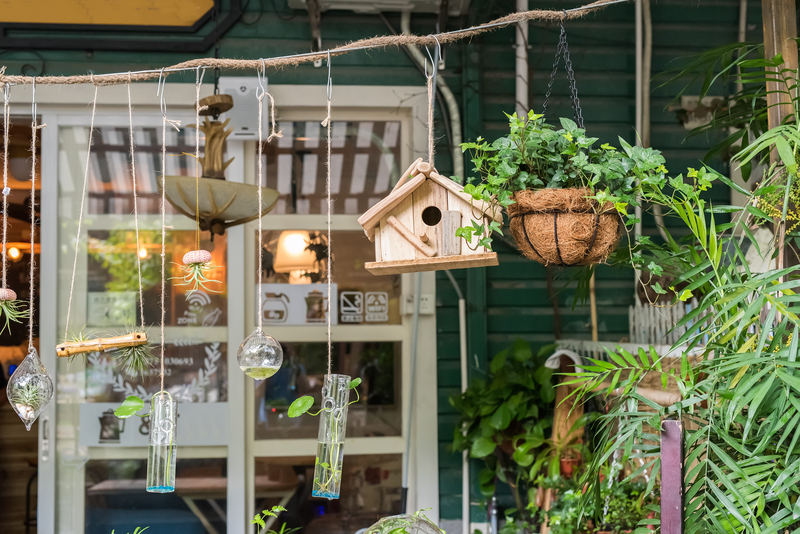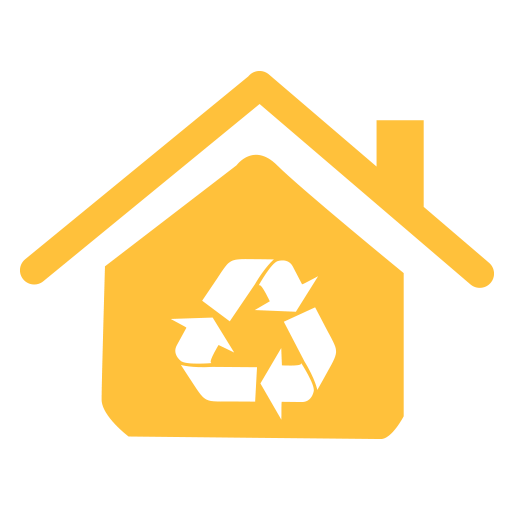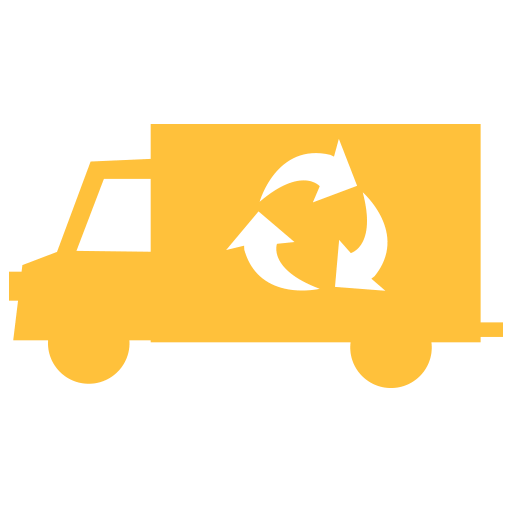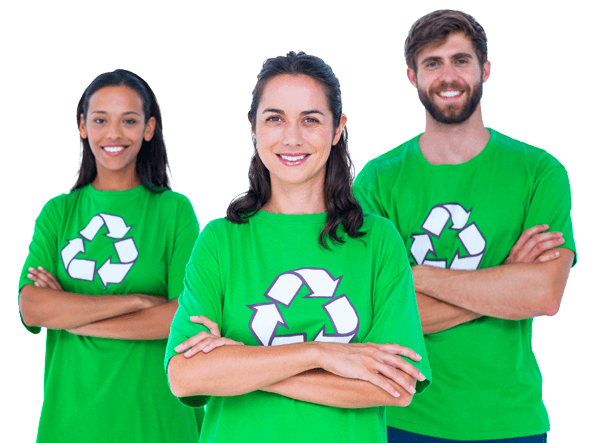Essential Tips on Which Plastics to Sidestep
Posted on 10/10/2025
Essential Tips on Which Plastics to Sidestep
Plastics have become integral to modern life, but not all plastics are created equal. Understanding which types of plastics to avoid can dramatically improve your health, reduce your environmental footprint, and help foster a more sustainable world. In this comprehensive guide, you'll learn essential tips on sidestepping harmful plastics, the science behind plastic toxicity, and safe alternatives for a greener lifestyle.

Why Is It Important to Avoid Certain Plastics?
Plastic is everywhere -- from packaging and water bottles to toys and household items. While they offer convenience, some plastics can leach toxic chemicals, persist in our environment, and pose risks to human health and wildlife. By making informed choices, you can minimize these hazards for yourself and future generations.
- Health Impact: Certain plastics release chemicals linked to hormonal disruptions, fertility issues, and even cancer.
- Environmental Damage: Many plastics break down into microplastics, contaminating oceans, soil, and entering the food chain.
- Non-Biodegradability: Most problematic plastics linger in the environment for centuries, choking wildlife and polluting habitats.
Identifying Problematic Plastics: Resin Identification Codes
To make smarter choices, always check the Resin Identification Code (RIC) -- the number inside the recycling triangle on plastic products. Here's an overview of key plastics types and which to sidestep:
- Plastic #1: PET or PETE (Polyethylene Terephthalate)
- Plastic #2: HDPE (High-Density Polyethylene)
- Plastic #3: PVC (Polyvinyl Chloride)
- Plastic #4: LDPE (Low-Density Polyethylene)
- Plastic #5: PP (Polypropylene)
- Plastic #6: PS (Polystyrene)
- Plastic #7: Other (includes polycarbonate, BPA, etc.)
Which Plastics to Avoid - A Closer Look
PVC (Plastic #3): Polyvinyl Chloride
PVC is commonly used in plumbing pipes, clear food packaging, shrink wrap, and some toys. This plastic contains phthalates and is notorious for leaching toxic chemicals, particularly when heated or exposed to fatty foods.
- Risks: Releases dioxins, phthalates, and vinyl chloride, which are linked to cancer, hormonal disruption, and developmental issues.
- Common Products: Cling wrap, blister packs, shower curtains, children's toys, and some water pipes.
Tip: Steer clear of PVC whenever possible. Look for "PVC-free" or "phthalate-free" labeling, especially on children's products and anything that comes into contact with food.
Polystyrene (Plastic #6): Styrofoam and More
Polystyrene, widely recognized as Styrofoam, is found in takeout containers, disposable cups, plates, egg cartons, and packaging peanuts. This plastic can release styrene, a possible human carcinogen, especially when used for hot items or microwaved.
- Risks: Styrene exposure is associated with cancer, impaired memory, and nervous system effects.
- Environmental Impact: Difficult to recycle and easily escapes into waterways, harming marine life.
Tip: Avoid using polystyrene for food or drink. Opt for products made from paper, glass, or stainless steel instead.
Plastic #7 (Other): BPA and Unknown Compounds
This category is a catch-all for plastics that don't fit into other codes, including polycarbonate, acrylic, and bioplastics. Many #7 plastics contain BPA (bisphenol-A), an endocrine disruptor linked to reproductive, developmental, and metabolic problems.
- Risks: BPA can leach into food and drinks, especially when plastics are heated or scratched.
- Common Products: Baby bottles, water jugs, sports equipment, and electronic casings.
Tip: Seek out "BPA-free" and avoid #7 plastics whenever possible. For food and drink storage, glass or stainless steel are far safer choices.
Safer Plastics: What Are the Better Alternatives?
While certain plastics are best avoided, others are considered relatively safe for limited use. Here's a rundown of safer options for everyday purposes:
- Plastic #1 - PET or PETE: Widely used for disposable water bottles and food packaging. Considered safe for single use but may leach antimony over time or when heated. Do not reuse or expose to sunlight for prolonged periods.
- Plastic #2 - HDPE: Commonly found in milk jugs, detergent bottles, and some toys. Very stable and less likely to leach chemicals. Prefer for one-time use and recycle when possible.
- Plastic #5 - PP: Used in yogurt containers, takeout food containers, and microwave-safe plastics. Generally regarded as safe but still should not be overheated.
Even when using "safer" plastics, it's best practice to avoid microwaving, exposing to high temperatures, or storing acidic or fatty foods in plastic containers. This minimizes chemical leaching and prolongs the product's safe use.
Natural and Reusable Alternatives
- Glass - Non-reactive, infinitely recyclable, and doesn't leach chemicals.
- Stainless Steel - Durable, corrosion-resistant, and ideal for both food and beverages.
- Bamboo - 100% biodegradable and sustainable for many applications.
- Silicone - Safe for food storage and high temperatures, provided it's 100% food-grade.
Key Strategies to Sidestep Unsafe Plastics
1. Learn to Read Plastic Codes
Familiarize yourself with the recycling symbols and plastics identification numbers. Plastics labeled 3, 6, and 7 are usually the ones you should sidestep.
2. Avoid Single-Use Plastics
Single-use plastics are among the most polluting and difficult to recycle. Bring your own reusable shopping bags, water bottles, and coffee cups to reduce demand for disposables.
3. Don't Heat Food in Plastic
Heating plastic containers, especially in microwaves, can increase chemical leakage. Always transfer food to glass or ceramic before heating.
4. Say No to Plastic-Wrapped Produce
Choose loose fruits and vegetables instead of pre-packaged or shrink-wrapped options. Bring your own mesh or cloth produce bags.
5. Ditch Plastic Straws and Utensils
- Opt for metal, bamboo, or even pasta-based alternatives for single-use cutlery and straws.
- Many eateries now offer sustainable options - ask before accepting plastic disposables.
6. Choose Non-Plastic Kitchenware
Switch to wood, bamboo, or metal for items like cutting boards, spatulas, or juice presses. They're more sustainable and don't harbor harmful chemicals.
7. Investigate Toy Safety
Toys made from PVC or containing phthalates are especially hazardous for children who frequently put them in their mouths. Look for safety certifications and seek toys made from wood or unpainted, natural materials.
8. Be Cautious with Plastic Water Bottles
If you must use bottled water, avoid reusing disposable PET bottles. Stainless steel or glass water bottles are a much safer investment for regular use.
9. Watch Out for Packaging Waste
Buy in bulk, support brands with sustainable packaging, and avoid heavily packaged goods. Fewer wrappers means fewer plastics entering landfills and oceans.
Common Myths and Misunderstandings About Plastics
"Biodegradable" Plastics Are Always Eco-Friendly
Reality: Many so-called biodegradable plastics still require industrial composting facilities and may not break down in natural environments. Always check local recycling or composting guidelines.
Microwave-Safe Equals Safe For Health
Reality: Microwavable plastics may resist melting, but this doesn't mean they won't leach chemicals into your food, especially after repeated use or with fatty or acidic contents.
Pushing for Change: The Bigger Picture
Making smarter plastic choices is more than a personal health decision. When you sidestep harmful plastics and demand safer alternatives, you support a larger movement against plastic pollution. Your choices drive businesses and policymakers to adopt higher standards and sustainable practices.
- Contact manufacturers requesting plastic-free or non-toxic packaging and products.
- Support plastic bans and community recycling initiatives.
- Educate friends and family about the hazards of unsafe plastics.

Conclusion: Smart Consumer Choices for a Healthier Planet
Knowing which plastics to avoid is a critical step in protecting your health and reducing your impact on the planet. By learning to identify plastics by their codes, steering clear of PVC, polystyrene, and plastics containing BPA, and embracing safe and reusable alternatives, you contribute to a more sustainable, healthier world for everyone.
Remember: every small change counts. Start by reviewing your daily habits, share your knowledge, and encourage your community to join you in saying no to harmful plastics!
FAQs on Avoiding Harmful Plastics
- Q: Are all plastics harmful?
A: No, but several (notably types 3, 6, and 7) pose significant risks to health and the environment. Choose safe alternatives wherever possible. - Q: Is it okay to reuse water bottles?
A: Not if they're made from PET (#1) or other single-use plastics. Opt for stainless steel or glass for repeated use. - Q: How can I safely store food?
A: Use glass, stainless steel, or ceramic containers and avoid plastic, especially for hot or acidic foods. - Q: What should I do with the plastics I already have?
A: Continue using non-harmful plastics for non-food purposes. Recycle properly when discarding, and replace them with safer or more sustainable options over time.
Take action today--empower yourself and your family to sidestep harmful plastics and opt for sustainable, healthier living!

 020 3409 1874
020 3409 1874 020 3409 1874
020 3409 1874




 House clearance
House clearance Rubbish collection
Rubbish collection





